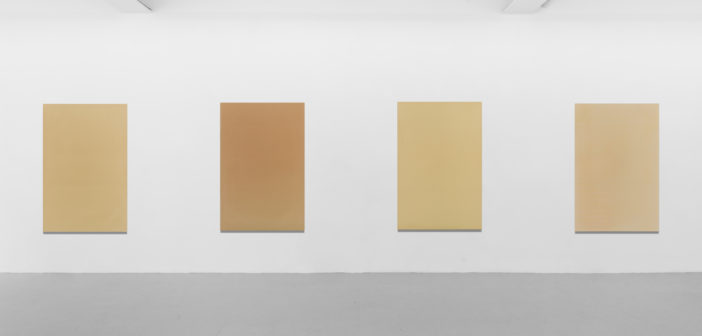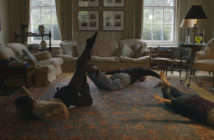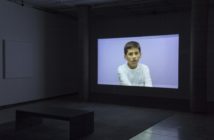Carlos Jiménez Cahua is an artist and curator living and working in NY. I have known CJC for a couple of years and have shared some wonderful and insightful conversations together. On May 1, we finally sat down to talk about contemporary art practices and culture, status in the art world/market, and how they are affected by our current socio-political climate.
Silvi Naci: You recently traveled to Israel as part of a curatorial group in efforts to meet with artists, museum directors, and curators in hopes for future collaborations. Can you talk about the socio-political art culture in the U.S. in relationship to Israel, the difference between the political situation in the U.S. versus Israel and the political engagement in art practices? The emergency in the art making in Israel versus in the U.S.?
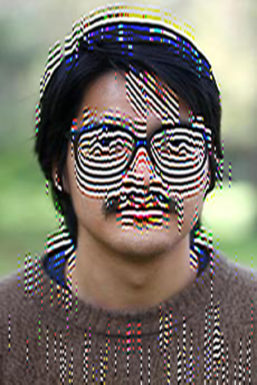
Carlos Jiménez Cahua, Untitled #65.p (My [Aesthetic], Vocabulary Did This To Me; bicubic), 2012, TIFF File, dimensions variable, ed. of 7 + 2 APs
I can’t help in my mind, since all of my life practically, I’ve been in the U.S. and thereby know American art practices the best, to then compare contemporary Israeli cultural production and that of the U.S. To make the comparison seems especially trenchant now, given that the U.S. is entering a politically fraught situation, one that cultural practices, of course, cannot ignore, as has become obvious. And in Israel, well, they’ve been in a situation defined by turmoil constantly since their founding, very different from the one in the U.S., but still, one that equally cannot be ignored by cultural practitioners.
So anyway, to perform the comparison, which is already an unfair and crude one, given that we’re only months into cultural reactions to the new administration, in Israel, it feels much more sophisticated and nuanced they way artists handle the political situation as subject matter. Whereas in the U.S., shortly after the election and inauguration, it felt like I couldn’t avoid the anti-Trump show or artwork, but all this was done, from my perspective, in a very asinine way; for instance, a painting of Trump with a dildo on his face, I don’t think this does anything but waste time, materials, and it tries to engage but it doesn’t have any real impact, except one that somehow magically reinforces the cult status of the president on the one hand, while also narcissistically pointing to the unrefined political and artistic leanings of the artist on the other. But again, the American response is a first draft, so it’s disposable by definition. I’m saying that seeing the cultural production in a place like Israel that has a deeper history of engaging with a stressed political order, that this provides an interesting schema with which to critically observe cultural practices that are newly, collectively engaged, as is the case with the U.S.
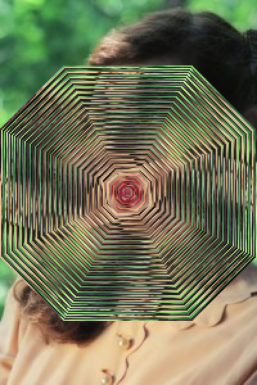
Carlos Jiménez Cahua
SN: To my observation moving to the States, the U.S. population is raised studying their own geography and history. When I was growing up in Communist Albania, we were studying everyone else’s history, geography, and languages. In the U.S. kids are brought up to believe they are ‘special’ and they can achieve anything—this was not the case for me, my family had different and more pressing worries.
It seems now that the U.S. is being forced to learn about other cultures? Can you share your thoughts on popular culture in the US and the education system?
CJC: That’s true to some extent, but one bad thing about this political situation is that it feels even more hermetic in the U.S. because now it’s Trump all the time. Even with world affairs, it’s largely now inflected by him, for instance, how his conversation went with the leader of such-and-such country, which is a really unfortunate lens to be put on non-U.S. news coverage.
I think also the phenomenon of Americans knowing mostly only about America has something to do with the sheer export force of the American culture industry. So for example, in Berlin and Beirut they listen to Beyonce, and thereby might become interested in what’s going on in the U.S. Whereas, what do we listen to here on a large scale from Germany or Lebanon? Nothing. Not that cultural production is the only route to engagement of the politics or culture of another country, but it’s a path that’s nearly totally evacuated.
SN: When speaking about popular culture in America I am reminded of your spray tan paintings, which may appear as minimalist brown scale paintings mounted higher than eye level—working with racial and hierarchical context—using actual spray tan cans. Can you talk a bit about this work?
CJC: I should clarify first that those monochromes are made with bronzing spray, not tanning spray. Tanning spray supposedly facilitates tanning, but bronzing spray is literally pigment in a can, that people use to artificially tan themselves.
Anyway, I’m ok with the piece being seen as yet another contribution to the hyper-formalist, pseudo- vanguard or rhetorical tradition of the monochrome; people can read my work in any way they want, but I think a more interesting and deeper reading is when you think about the fact that people, a very specific “market” actually spray themselves with these pigments. So for me, the piece cleanly foregrounds the inverted value system of skin tone within people of or descended from Western and Northern Europe, for whom these products are marketed. That such cultures extol a “tanned” look is in sharp contradistinction to the value system that cultures, nominally regarded as people of color, abide by, wherein an excess of such “color” is unfortunately but still genuinely disparaged.
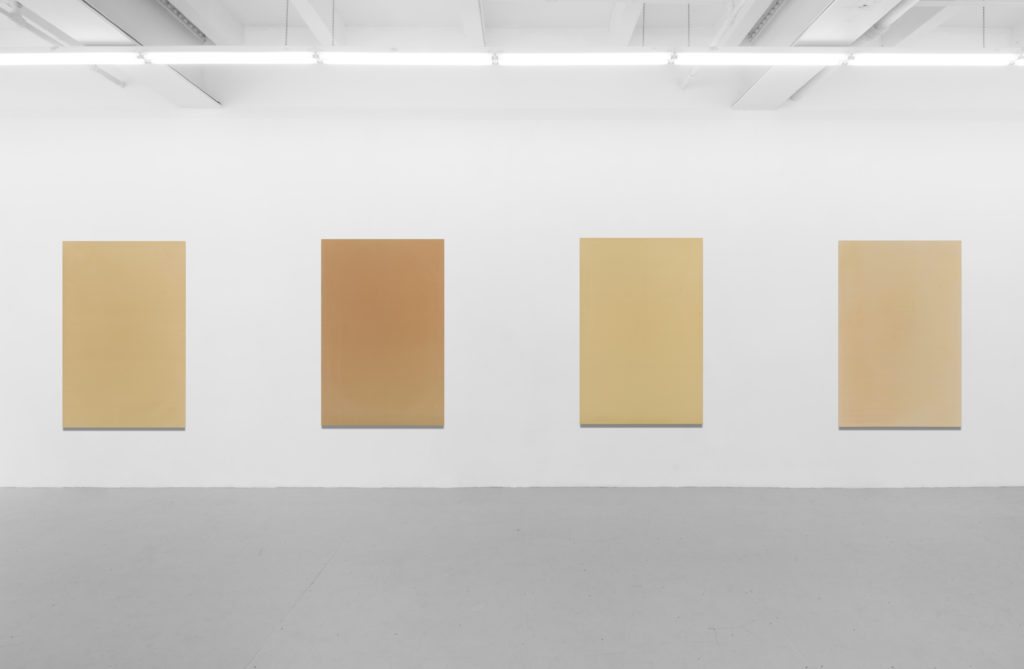
Carlos Jiménez Cahua, Left to right: Untitled #122 (Brazil Bronze, TANSXL); Untitled #122 (St. Tropez, Self Tan Dark Bronzing Spray); Untitled #122 (Australian Gold, Continuous Spray w/Bronzer - SPF 8); Untitled #122 (Body Drench, Quick Tan Instant Bronzing Spray Medium/Dark). Each: 2014/2015; bronzing spray on canvas; 60 x 40 inches
SN: This brings me to your work Untitled #123 where an actor simulates a language foreign to him/her – which is an ongoing piece. Are you concerned that the work might be interpreted as racist? What are you interested in by having English speakers imitate other languages? Can you speak about this work?
CJC: I had actors come to the studio for whom I’d prepared audiovisual material in a language foreign to that actor. They would study the clips for a short time, 30-40 minutes, then they would mimic that language, not by repeating the material I gave them but instead by improvising on the sounds, prosody, etc. of that language for 90 seconds. I didn’t keep it Eurocentric, I included languages like Finnish and German, but also languages from Africa, Asia, and India. The piece is fatally flawed right now since it’s only English speakers doing other languages—and I don't mean it to be a quasi-imperialist gesture—the goal is to go to another country to also work with actors who don’t speak English (or as much as I can find this since most actors want to speak English), and do this work to see what it sounds like, say, if you have a Bengali speaker imitate English, and imitate Swedish, or Swahili—that way it’s not an activity of how just English speakers imitate another language.
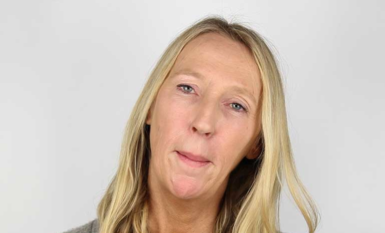
Carlos Jiménez Cahua, Stills from Untitled #123, single channel video, 2015
SN: It reminds me of my experience moving to the States and learning English from popular culture and music—when I didn't understand a word I would just mumble it to fill the space. My jaw would hurt so much from moving it differently while speaking English – the pain that is also visible in the expressions of the actors in your piece.
There’s a part in Broad City where the character Ilana imitates various languages, but when asked to imitate Chinese she refuses alluding to it being racist.
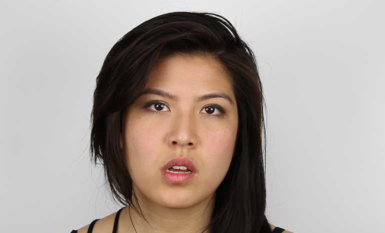
Carlos Jiménez Cahua, Stills from Untitled #123, single channel video, 2015
CJC: There was an instance when I gave Yoruba clips to an actor and she immediately dropped out. We had a conversation where she thought it was racist and I disagreed—I don’t want to foreclose her opinions or mindset about this, but I think she was thinking she’d imitate a European language. What is the difference and why would you assume only a northern or western European language? So after that, I would tell all the actors that it could be any language they’d be asked to imitate, even those from the “global south.”

Carlos Jiménez Cahua, Stills from Untitled #123, single channel video, 2015
I’ve noticed there’s a rough fault line in how the work is seen, if you are monolingual, and because we are in the U.S. and speak English, you’re more likely to see the work as uncomfortably quasi-racist; and if you are multilingual and/or multicultural, you tend to be warmer to the piece and find the humor in it. In my experience being bilingual and having also studied German and French, it feels interesting and funny to make my mouth make these noises that I’m repeating, like a parrot—which edges toward the work’s genesis, more playful and curious than racist or offensive. But I see how people can take it that way.
In looking at the piece and figuring out its languages being mimicked, you see the actors strain their mouth, which is moving in a way they typically don’t move it, and I suspect that some of the more negative things that people think of the piece come from mistranslating that physical non-comfort of the actors.
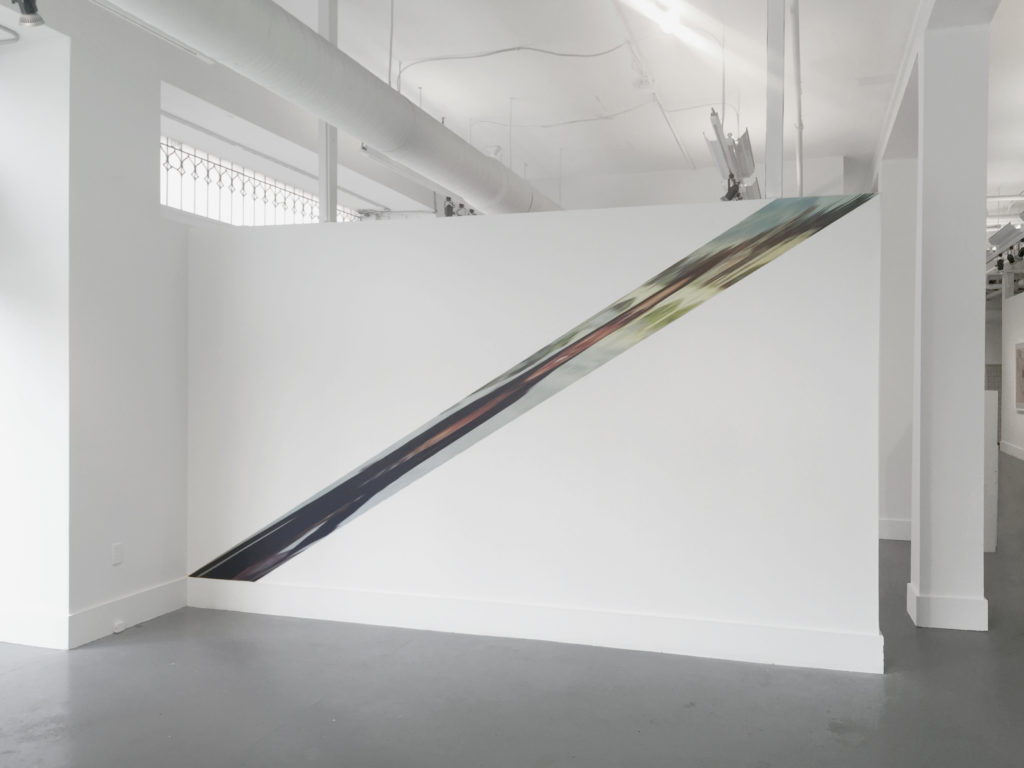
Carlos Jiménez Cahua, Untitled #77 (SF, 2015), 2015, digital vinyl print, dimensions variable (as shown: 88 x 133 inches); installation view from Gollum: Monsters of Ruin and the Techno-Sublime, Artspace, New Haven, CT
SN: I am reminded of the erosion and destruction of the faces of your old bosses—from a recognizable image to abstract object of a person's identity—thinking of the work of Hito Steyerl as well here. You have created a system to disguise the identity of people, color analog prints—tell me about this work? To what extent are you interested in eliminating recognizable aspects of their identity? And how we read images?
CJC: A way I'm not with my work at all is that I don’t have any preciousness towards it, you could take one of my pieces and rip it apart right in front of me, or start using it as a doormat, I wouldn't care—I just don't have that kind of relationship with my work. Thinking that way made me want to integrate actual destruction into making the work. So working with photography, I wanted to integrate destruction both in the image file and in the printing of it. On the digital side of it, for example, I was finding very simple transformations in Photoshop and then doing them ad nauseum, either manually or automated; and for printing, I’ll do things like make a print on glassine, which although meant to protect art, is absolutely not designed for inkjet printing, and when you do it, it just makes a total mess since the surface doesn't absorb the ink and you lose a lot of the sharpness in the digital file.
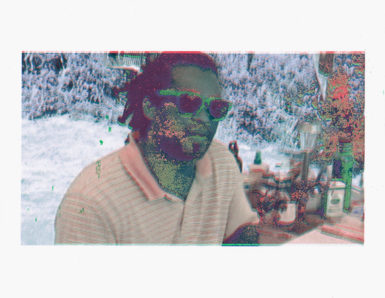
Carlos Jiménez Cahua
When I was doing these destructive constructions with pictures, I realized pretty quickly that if I did it to a chair, you wouldn’t know what it was, you wouldn’t realize chairness from it, and I didn’t want total non-representation to happen, because I was still interested in how much could be re-constructed in the viewer. So I realized that only if I did it to faces or people, is there then this reconstructive capacity from the perspective of the viewer, that they would be able to take a face that was all distorted and moved around and make it back into a face. When I figured out that it needed to be faces, I wanted it to be a specific collection of faces; I wanted to limit it in some way, particularly in some personal way. I thought of doing all my friends, but that seemed too amorphous. Then I thought past romantic partners, but that seemed too charged. So I ultimately went with past and current bosses, something with clearer limits and not really emotive. When I started collecting their pictures, I figured out who counted as one of my bosses was less rigid than you’d think, there’s obviously people in there who wrote me a paycheck, but also the college/university deans of where I’ve studied and taught, so people who didn’t have financial, but still administrative authority over me. Anyway, I appropriate all these portraits from the Internet, using search engines to find my bosses’ pictures, and the first image that comes up is chosen, because I’m trying to evacuate my own judgment.
Parallel to the construction/deconstructive stuff, I became interested in making site-specific photographs: a photograph that wasn’t just site-responsive but was actually specific to the site. One of the ways that the boss piece has shifted is that now when I am asked to show it, I always show the boss(es) of that particular exhibition space where the show’s taking place. It’s thereby site-specific not in the classical, architectonic sense, but instead site specific in a way to lay bare the people who literally fund or manage the exhibition space. Paradoxically enough, the people who have control over a space are largely excluded, hidden from view I mean. So unless you have an intimate relationship with the Institution, you don’t know who they are, and you probably don’t care. But I became interested in foregrounding these figures, taking them from the backroom into the actual exhibition space, showing their faces publicly, yet in the spaces where they have immense and personal control.
To learn more about Carlos Jimenez Cahua please visit: www.carlosjimenezcahua.com

Carlos Jiménez Cahua, Untitled #65 (SR, Volta, 2017), 2017, TIFF file
Carlos Jiménez Cahua received an A.B. from Princeton University and an M.F.A. from Massachusetts College of Art and Design. He has exhibited his work in solo and group exhibitions nationally and internationally. His work has been reviewed in The Boston Globe, The Wall Street Journal, *The New Yorker*, and Artforum, among other publications. He has participated in multiple residencies, including I-Park in Connecticut and the Workspace program of the Lower Manhattan Cultural Council. He is based in New York and is currently a Visiting Lecturer in the Art Department at Wellesley College.

